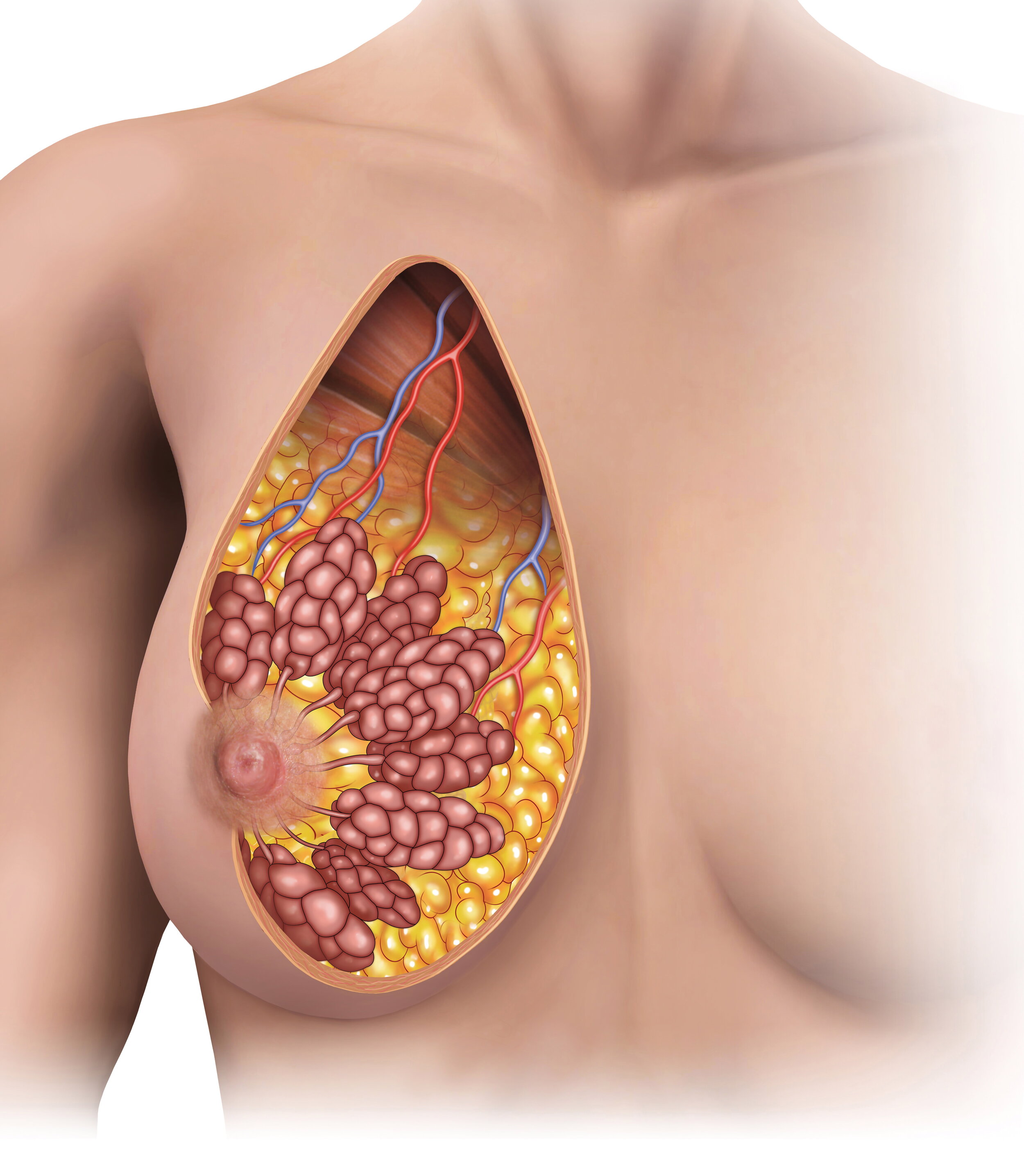Why Does Flange Size Really Matter?
Traditional breast pump flanges use a funnel-to-tunnel style of set up in which the nipple, and no more than 2-3mm of areola, enter the tunnel with the suction of breast pump turned on. The goal is for the stretching and stimulation of the nipple to trigger the flow of milk by the release of oxytocin and for the nipple to be safe from trauma and damage.
Take a look at the milk ducts as they enter the nipple at the same place that “funnel to tunnel” hard plastic ring will hit the breast tissue. See how the wrong size of flange could potentially cause damage to the milk ducts? Also, consider that the breast is highly vascular to support milk synthesis, and there are lots of tiny blood vessels in this same area that are prone to damage.
If the pump flange is too small, the nipple will not be able to fully enter the tunnel, and if it does enter the tunnel, it is unlikely to move unrestricted. Some people with more elastic tissue will find they are able to use flanges that are smaller than the actual diameter of their nipples because the nipple stretches and snakes its way into the flange tunnel. This may not even feel super painful to them, but it compromises all of these milk ducts and blood vessels and will result in reduced milk output and pain and nipple damage over time.
If the pump flange is too big, the nipple AND a substantial part of the areola can enter the flange. Pain, swelling, and nipple damage may occur. The swelling will most likely restrict the milk ducts resulting in an inability to empty the breast. Over time, the nipple may become swollen making future sizing more difficult as the swelling makes the nipple measure bigger than it really should be.
So if I have pain, is the flange too big or too small?
Pain is a signal from your body that something is not right. Pain is there to alert you to a situation that needs attention. Pain often means the flanges are the wrong size, but it doesn’t tell us anything about which direction to change the flange size in. That problem can only be addressed by measuring the nipple and working from there to properly fit the flanges.
There are many affordable options to measure your nipple. We offer the free printable nipple rulers, you can buy a circle ruler or calipers online, or if you want the best possible outcome, book a sizing session with me.
There is no excuse for poorly fitted flanges - so if your hospital LC or nurse did not measure your nipples with a ruler, you need to measure them!



